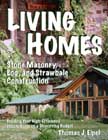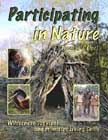|
Sequential Worldview
Science, Industry, and Material Wealth
From Roadmap to Reality: Consciousness, Worldviews, and the Blossoming of Human Spirit
 |
"Culture makes a difference in the way evolution operates because it represents a second inheritance system, conveniently labeled memetic, additional to the genetic one, operating through the mechanism of social learning. There is increasing evidence that the importance of this mechanism for evolution in non-human species has been much underrated. The fact that cultural transmission operates through social learning does not make it less Darwinian than genetic transmission. Both are specific instances, with their own properties, of a more
general category of information transfer processes that lead to the production of heritable variation and its modification through time."
--Stephan Shennan, Genes, Memes, and Human History |
|
The Rise of Third-Person Perspective

The transistion from agriculture to industry led to new ideas and new perceptions of reality, which seem utterly commonsense in retrospect. For example, like everything else in the
1700s, guns were manufactured one at a time by gunsmiths, and no two guns were identical. Every broken gun had to have custom parts made to fix it. Interchangeability originated
in France near the end of the century and quickly spread to America, where Eli Whitney is commonly credited with the invention. In about 1798 he built ten guns with identical parts and assembled them from piles of parts in front of Congress. Congress was immensely impressed, and subsequently issued standards for United States equipment.
Eli Whitney's idea of interchangeable parts became the foundation for another simple idea: assembly line production. Whitney initiated division of labor, with different people in the same factory specializing in different parts. Henry Ford perfected the assembly line for construction of the Model T in 1913, forming the factory model for modern industry. The assembly line slashed production costs, making automobiles affordable for ordinary people. More importantly, industrialization, combined with growing literacy in science and evolutionary theory, helped mainstream consciousness shift towards sequential processing.
To appreciate the depth of this perceptual shift, consider that, prior to trains, human travel was fused with the natural world. People traveled overland by foot, horseback, or buggy, intimately connected with the passing of every house and farm, keenly aware of the fatigue and smells of the livestock and every bump in the road. It was an intensely first-person, present-moment-oriented experience. The railroads changed human perception, as noted by Wolfgang Schivelbusch in his book The Railway Journey: The Industrialization of Time and Space in the 19th Century. Early passengers were shocked to break free from nature to speed along at twenty or thirty miles per hour. Englishmen described it as the "annihilation of space and time," as their country seemed to shrink, with destinations suddenlly becoming two-thirds closer together than ever before.
We might imagine that passengers would have reveled at the thrill of speed, racing through the scenic countryside. However, the foreground sped by at such a pace that passengers were forced to look at the bigger, panoramic view of the landscape. The first-person experience of bouncing along in a buggy was replaced with a detached, third-person perspective looking out the windows. Passengers found it tedious. Traveling was no longer about the journey, but the destination. Travelers moved faster than ever before and impatiently awaited the end of the ride. They took up reading to pass the time.
Society gradually adjusted to the new reality, until the detached, panoramic perspective became normal. The changes brought on by technology filtered throughout culture. Small, traditional stores gave way to department stores with wide, railroad-like aisles and panoramic views of products on the shelves. Industrialization changed the perception of reality, such that most people become impatient with a slow, first-person oriented travel experience. We prefer the sweeping big picture to the mundane details of every street and farm.
Notes
1. Stephan Shennan. Genes, Memes, and Human History. Thames & Hudson: New York. 2002. Page 264.
2. _____. "Interchangeable parts." Wikipedia. https://en.wikipedia.org/wiki/Interchangeable_parts. Accessed November 8,
2006.
3. Wolfgang Schivelbusch. The Railway Journey. The University of California Press: Berkeley, CA. 1977, 1986.
|
Next Page: Systems Worldview

Interesting? Get the whole story!
Order Roadmap to Reality Now
|
Looking for life-changing resources? Check out these books by Thomas J. Elpel:
|
|











